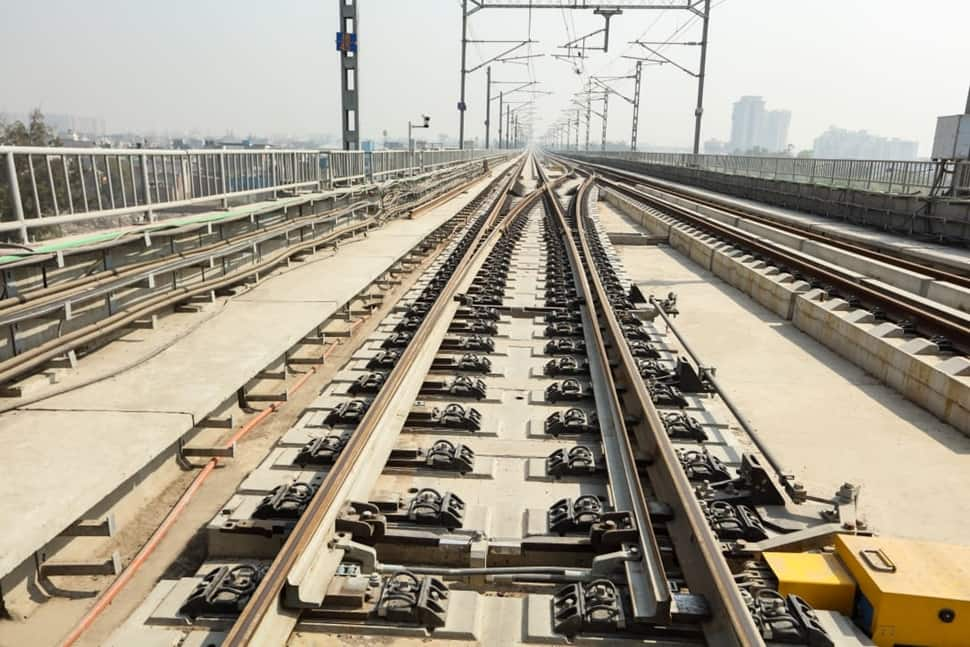Delhi-Meerut RRTS: Namo Bharat Trains Running On One-Of-Its-Kind Tracks
NCRTC has adopted the strategy of implementing uniform track structure across its different corridors and this precast track slab technology will be used for all under-construction and upcoming RRTS corridors.
Trending Photos
)
India's first RRTS project between Delhi and Meerut started revenue operations today on the priority corridor between Sahibabad and Duhai. RRTS is a semi-high-speed system with a design speed of 180 kmph. With an operating speed of 160 kmph and the station at every 5-10 km, the RRTS trains or Namo Bharat trains will cover a distance of 100 km in about an hour. However, such a semi-high-speed system requires an efficient and qualified track to run.
The existing ballastless track system being used in metro rail projects in India is generally suitable for design speeds of up to 95 kmph. In the absence of high-speed ballastless track experience in the country, NCRTC, the implementing agency of the RRTS, had a daunting challenge at its disposal to find a suitable track for the RRTS. This made NCRTC explore several internationally prevalent rail track systems to select an apt track system suitable for high speed which is also reliable with low maintenance. However, buying an international track system was not enough as the NCRTC worked for the indigenisation of all the systems being used in the RRTS.
Therefore, after studying various international systems, NCRTC selected the best ballastless track technology Austrian Porr and purchased their IPR rights for RRTS corridors. With this, NCRTC created a capability in India to design a ballastless track that supports high-speed operations, making it the first of its kind in India.

This technology is being used for the first time in India in the construction of the first Regional Rail of the country. The Precast Track Slab technology produces high-capacity ballastless track slabs that have a longer life cycle and require less maintenance. Due to this, the overall life-cycle cost of the track is also low. These track slabs are generally 4 m x 2.4 m in size and use elastomer as a separation layer. High-quality concrete is being used in the construction of these track slabs, due to which it has high strength and very good finishing.
NCRTC has adopted the strategy of implementing uniform track structure across its different corridors and this precast track slab technology will be used for all under-construction and upcoming RRTS corridors. The efficiency of the track was visible when the Namo Bharat trains achieved a speed of 160kmph during non-revenue operations.
Stay informed on all the latest news, real-time breaking news updates, and follow all the important headlines in india news and world News on Zee News.
Live Tv







)
)
)
)
)
)
)
)
)
)

